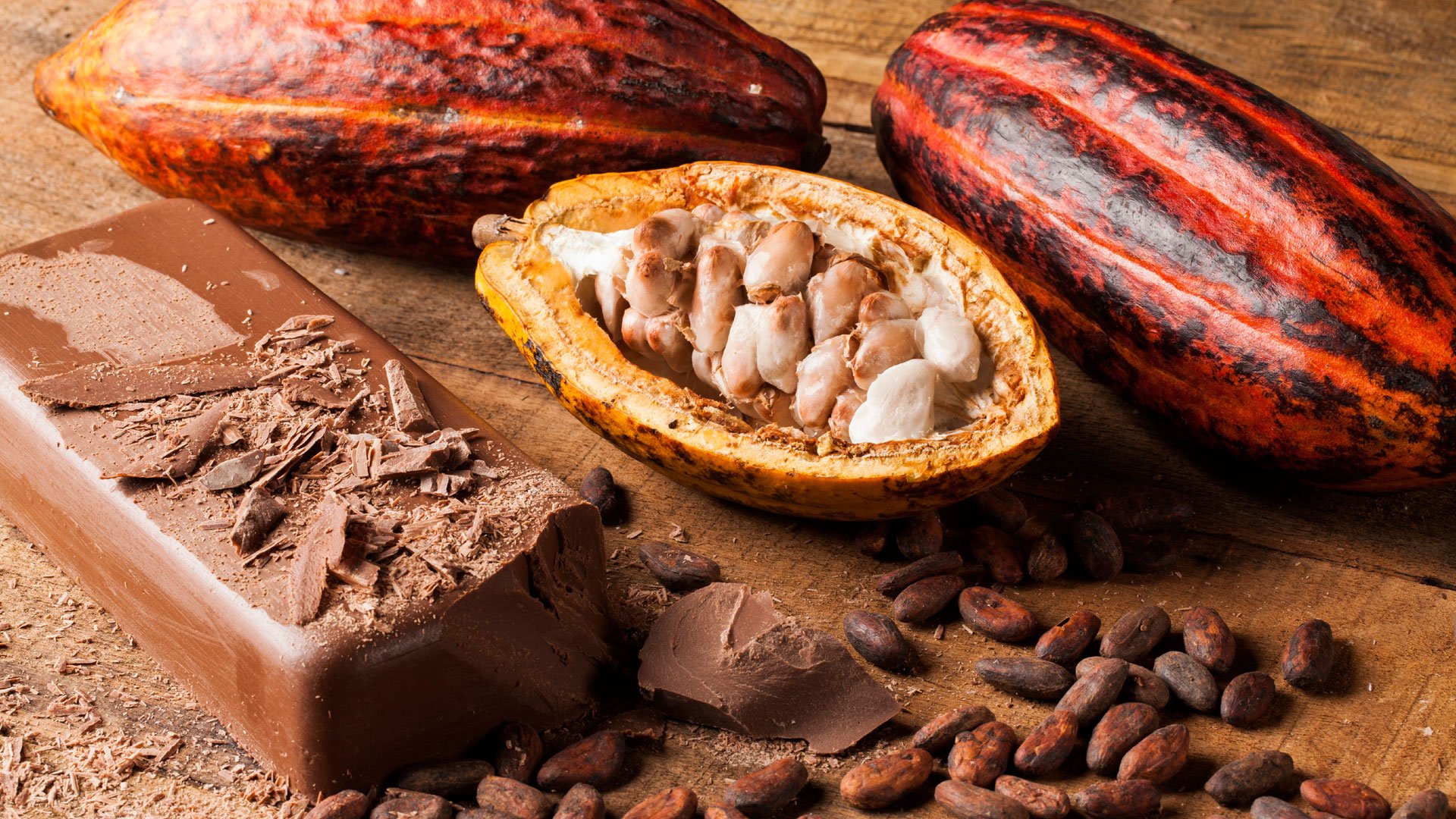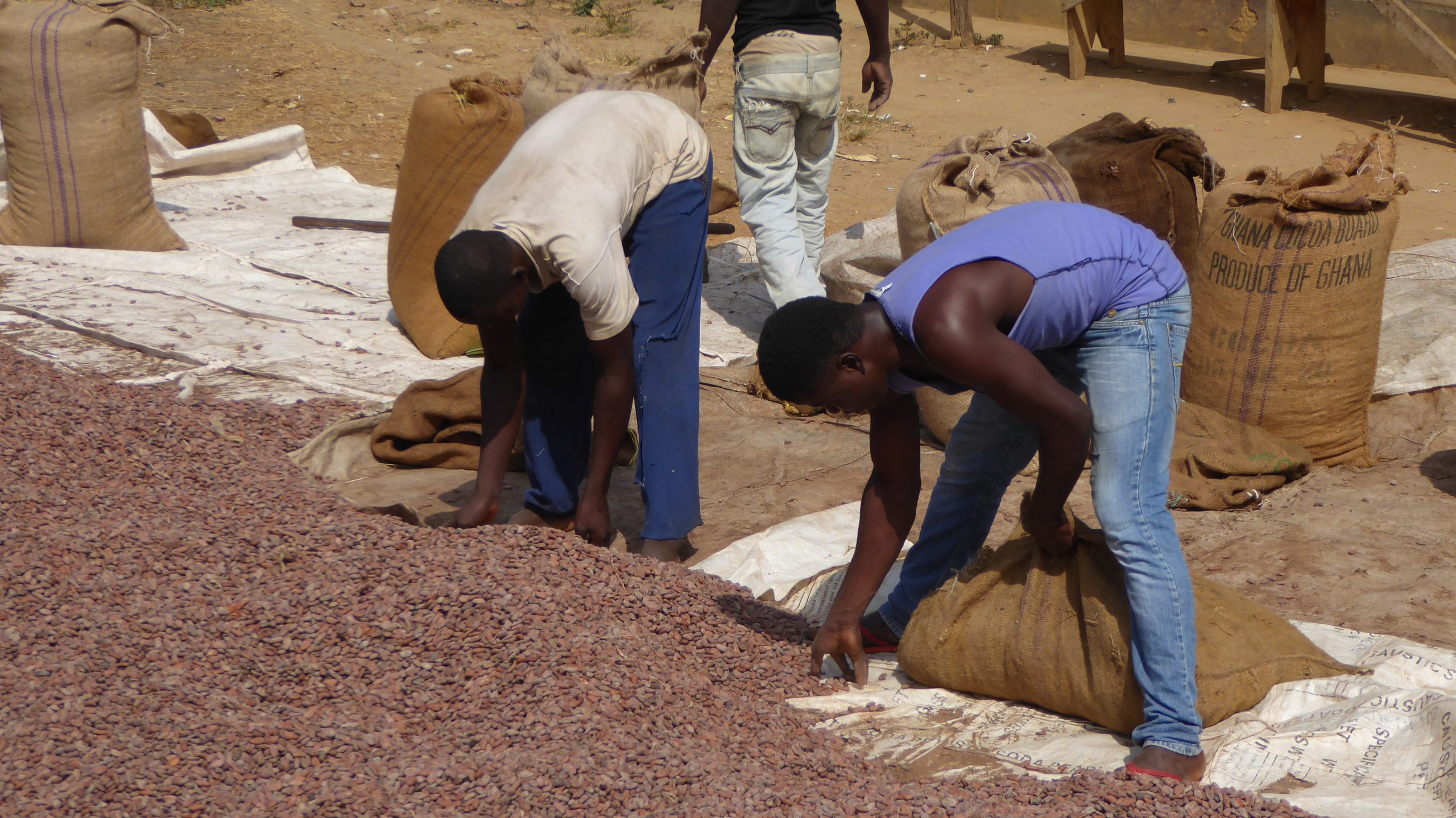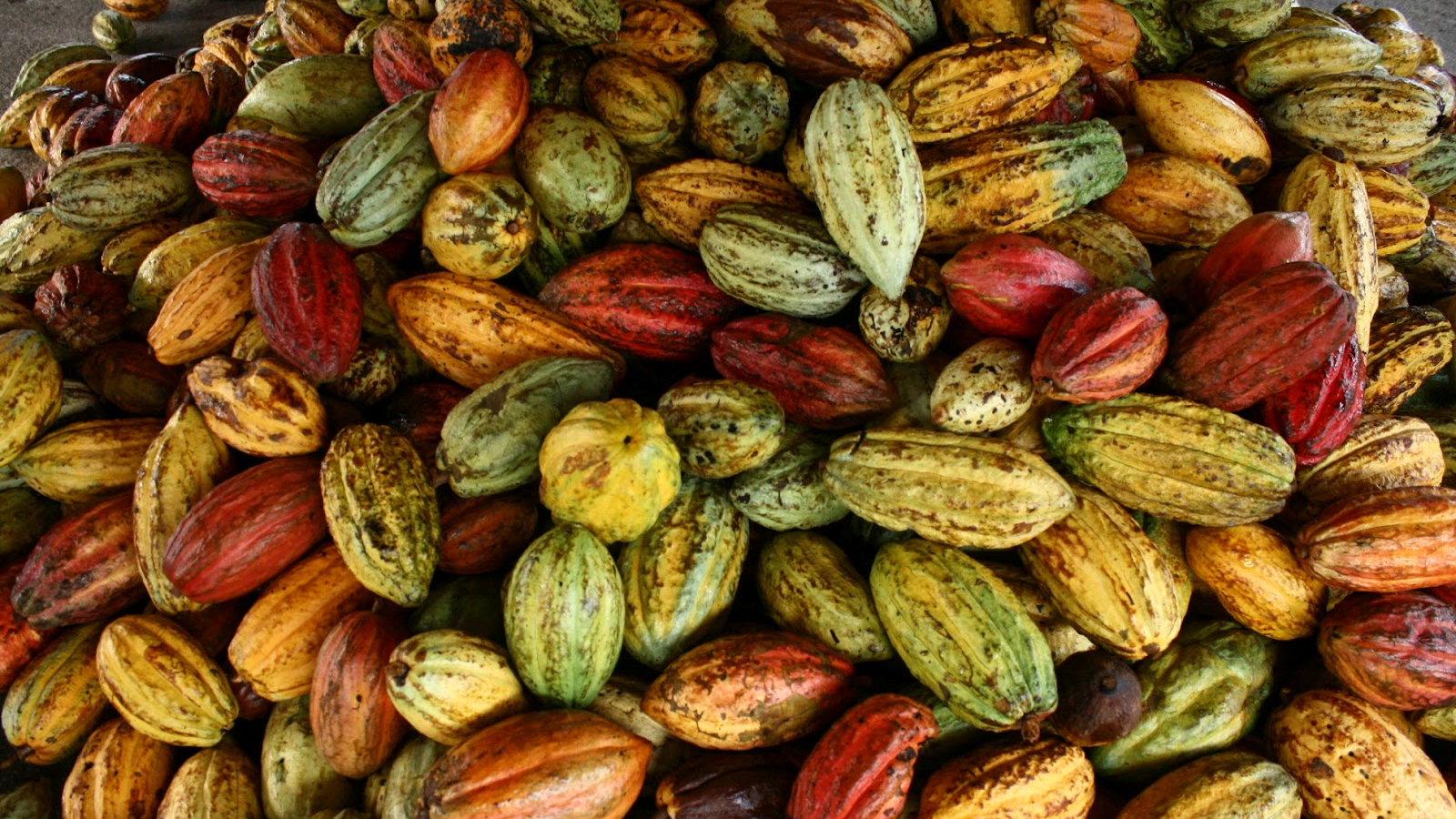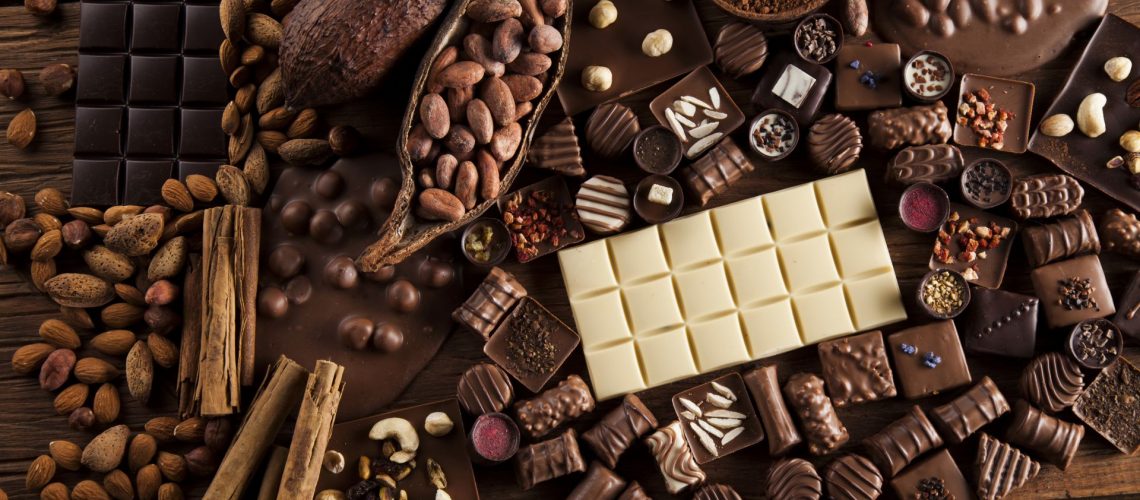The production process that turns the cocoa bean into a chocolate bar requires many intermediary steps and involves multinational corporations. More and more chocolatiers all over the world now want to take the whole process in their own hands. Their raw material of choice is not liquid factorysupplied ‘couverture chocolate’ delivered in large cisterns, but cocoa beans which they personally select in the South.
This growing group of artisanal chocolatiers – known as the bean-to-bar movement – resolutely targets quality rather than mass production and looks for top-range beans with exquisite flavours. Their work mostly results in a good relationship with cocoa growers and fair pay for the growers’ tough labour.
Chocolate revolution
The ‘bean-to-bar’ movement originated in the United States where sometimes the term ‘chocolate revolution’ – an overstatement – is used. At the onset of the millennium an increasing number of small chocolate businesses resented the industrial process that chocolate making had become. Especially in the US, but also elsewhere, most chocolate bars contain little cocoa and instead are made of cheap, low-grade beans, the flavour of which is masked by an overload of sugar, vanilla or additives.
“In fact, bean-to-bar goes back to traditional chocolate making of 100 years ago,” says Nico Regout, an expert. “At the time, artisanal businesses still managed the whole process, literally, from bean to bar. That is what a new generation of chocolatiers wants to return to. But it is not easy. It requires professional skill and the right equipment. But it can be done. in Belgium more and more chocolatiers are also showing it can be done.”

In search of flavour
To fully understand the bean-to-bar concept you have to lay bare the whole cocoa supply chain,” claims Alice Voisin, a young Liège-based anthropologist who started a business offering chocolate tasting and promoting and retailing bean-to-bar chocolate throughout Belgium’s Walloon region. “The chain starts with the cocoa grower and their seasonal workers who tend the trees and harvest the beans. This is followed by fermentation and drying which are very important stages because they impact taste. Most growers lack the necessary expertise to do this themselves unless they have established cooperatives to work together. The dried beans are then put in jute bags and transported to a port for export. Speculators may intervene or the beans may pass through the hands of multinational cocoa processors and end up with ‘Big Chocolate’ players such as Mars, Mondelez, Nestlé, Hershey’s or Ferrero.”
“The outcome of the complex processes of roasting, grinding and mixing is liquid ‘couverture chocolate’, the basic raw material that companies and chocolatiers use to make chocolate bars, truffles such as pralines or ‘Belgian chocolates’, or other chocolate products. Belgium’s traditional chocolatiers mostly use the Callebaut or Belcolade ‘couverture chocolate’ to make their world-famous Belgian pralines,” continues Voisin.

“Making pralines is an art in itself but bean-to-bar chocolatiers envision something else still than only food art. They want to return to the source, the cocoa bean, and to past knowledge.” Pierre Marcolini was a pioneer of this approach. He travelled the globe for more than 20 years in search of the best Criollo, Trinitario or Forastero beans. He sources beans from 12 countries and is an expert at roasting them. The roasting process is essential for the flavour and aroma. “We have been making our chocolate ourselves, from bean to bar, since 2001,” he told De Tijd, a Belgian newspaper. “At the time they thought I was mad. But today, what I do has become fashionable. That is bitter-sweet irony. At the onset of the 21st century all Belgian chocolatiers visited plantations to select beans. At some point Callebaut said: We will do this for you; do not bother with the raw materials. You just stick to processing the end product.”
Benoit Nihant, who is also from Liège, gave up his engineering job and teamed up with his wife to experiment with a tiny French chocolate maker’s ‘couverture chocolate’. In the end he looked for machines to roast and grind the beans himself. “We only found machines to process industrial quantities and ended up buying and retrofitting old machines from the 1950s. We also travelled the world in search of old trees and growers who fermented and dried their beans using traditional techniques. We looked for real partners in the plantations. Bean-to-bar is a complex approach. We haven’t made it easy on ourselves. But this is what we wanted to do.”

During one of his many expeditions, Dominique Persoone, from Bruges, discovered a farm in southern Mexico which still had Criollo Carmelo cocoa trees. When the farmer died shortly after, Persoone decided to start a plantation himself. It took six years before the newly planted trees yielded fruit. “Criollo beans are the tastiest but also the weakest variety because they are prone to disease. It is why many growers have switched to stronger more productive varieties. Only when growers are paid a fair price will these flavoursome beans have a future.”
All the chocolatiers mentioned above are top of class and have established international fame. But young Belgian entrepreneurs also venture into the bean-to-bar approach. After they tasted a piece of artisanal Colombian-French chocolate, Isabelle Quirynen and Tom Geens visited Peru and Colombia. A couple of years later, they decided to make their ‘smallbatch’ chocolate in what they call ‘allegedly the smallest chocolate factory in the world’. They select the beans, which are roasted in Colombia but ground in a tiny kitchen in Antwerp. “We pack almost all our chocolate bars in our backpacks and deliver them by train and folding bike to small shops throughout Belgium as well as to a few shops in Amsterdam and even Berlin. It is very time-consuming, but it is not our aim to become a multinational corporation. We want people to rediscover the real flavour of cocoa.”
In search of cocoa-growing partners
In addition to a search for flavours and aroma, the bean-to-bar chocolatiers have something else in common. They are familiar with the cocoa growers, unlike most other players in the chocolate industry. In every interview Dominique Persoone emphasises: “When I am in my workshop and I open a bag of beans, I am aware of the work that went into filling that bag. I know there are people who wake up at 5 a.m. to get to the plantation on time and start working, sometimes in temperatures of 45 degrees Celsius. Farmers are paid far too little for their work. In fact, they are exploited.”
Almost every bean-to-bar chocolatier comes to the same conclusion. “Growers are paid too little to live well and to send their children to school,” says Marcolini to Bruzz.be. “Big corporations’ solution is that growers replace their own authentic varieties such as Criollo or Trinitario with new varieties such as CCN50 or CCN51. These plants mature faster and have better yields. That is how major players aim to address the revenue issues of growers. However, the result is that chocolate loses its palette of flavours. As an entrepreneur I want to assume responsibility vis-à-vis these growers and secure the future of those flavours and of chocolate in general. That is why we always work directly with the growers and pay them much higher prices.”
From his extensive travels, Benoit Nihant learned that “small plantations with better cocoa varieties are very vulnerable though”. “This is why a fair price is so essential to help growers resist the call launched by the industry to switch to other varieties. It is why we never negotiate about the price they ask. We are interested in a direct, sustainable partnership based on trust. In fact, we go further than fair trade. Fair trade still follows the global market price, even though they pay a little more. But the global market price doesn’t base itself on the farmer’s needs. The global market price is based on the market and speculation.”
A first in West Africa
In Ghana and Côte d’Ivoire there is something referred to as the billion-dollar gap. While cocoa exports run in the billions of dollars, chocolate for the growing middle class in West Africa is imported from Europe for many millions of dollars. Some young entrepreneurs believe it is time to change this. The past years they have worked hard to produce 100% locally manufactured bean-to-bar chocolate such as ’57 Chocolates, Moments Chocolate, Niche
Chocolate (Ghana) and Instant Chocolate (Côte d’Ivoire). They all started as small initiatives but dream of becoming big.
Bean-to-bar and fair trade
The same story is told by the small-scale Coup de Chocolat: “The price of a tonne of cocoa is 2,000 dollars and fair trade pays an additional premium of 200 dollars. We pay four times that. Because the farmers need to be incentivised to work in a sustainable manner. In fact, we want fair trade to raise their commitment. Our 45-gram chocolate bar costs five euros. For that price you can buy a huge chunk of chocolate in any supermarket. That is something we need to explain to people when we are on the market with our product. And we need to let people taste. Unless your taste buds are ruined, you cannot deny that we offer something different. Most people begin to understand. By showing that people are willing to pay a bit more for quality, we can put the cocoa business under pressure.”
Alice Voisin agrees: “In my view, fair trade is a market with a certain level of ethics, but it still uses the same rules as the traditional market. Bean-to-bar advocates prices that are not based on the global market price but on the quality of the crop and of the fermentation and drying process; in other words, on local production conditions. In addition, hybrid cocoa varieties with higher yields but poorer flavours which in addition negatively affect soil quality may be fair trade certified. That is not normal. For me the balance between people and their environment is an equally essential criterion.”
Voisin, who has a background in development cooperation, considers bean-to-bar as a way to create optimal added value in cocoa-producing countries. The product range that she distributes in Belgium includes bean-to-bar chocolate bars of Marou, a business from Vietnam, of Menakao from Madagascar and of Antidote from Ecuador.

Limits to the bean-to-bar movement
“Bean-to-bar is a very valuable approach,” reacts Charles Snoeck of Fairtrade Belgium. “Particularly because of the higher prices and the long-term partnership with farmers. But these are also our two key elements. Yet, we do indeed have different priorities and strategies. Bean-to-bar remains a niche product because of the volume sold. They focus on quality and unique flavours, which they primarily find in Latin-American beans and so that is where they find partners. Unfortunately, it does not resolve the extreme poverty of Ghana’s and Côte d’Ivoire’s growers, who represent 70% of global cocoa production. They need urgent solutions such as a higher price to start with. That is our field of action. Together with our cooperatives we have increased the Fairtrade minimum price. We have announced it at the end of 2018.”
Thierry Noesen of Belvas, a Belgian chocolate producer which resolutely goes for fair trade, also considers bean-to-bar to be an attractive approach: “Any chocolatier who gets in touch with farmers soon sees that they have a hard time. This will help with considering a higher price which must be calculated in the marketing story. But chocolate production is a very complex dozen-step process. Doing each step oneself is not the key criterion to me. Each step requires considerable energy and investments with the right techniques to achieve the desired quality. That makes larger batches the more rational approach. Shipping small batches to Europe is also very expensive. That is why we prefer the in -between solution. We’re in direct contact with cooperatives and pay them a price that is well above world market prices. We select the beans we want and rely on the industry’s supply chains. That leads to an end product with an acceptable price. An additional advantage for our partners is that our suppliers often order extra beans to efficiently cover the costs of logistics.”
Chocolate for value seekers
Bean-to-bar is not about the size of the batch but about craftsmanship and flavours. Packaging also reflects a good taste. As a result, bean-to-bar definitely is in a higher price range. “We must disseminate our ideas more broadly,” concludes Dominique Persoone. “That way, we can appeal to chocolate aficionados who don’t solely look for a good taste but who also care about origin and how the chocolate is produced. You might end up eating less chocolate but genuinely value the product.”


